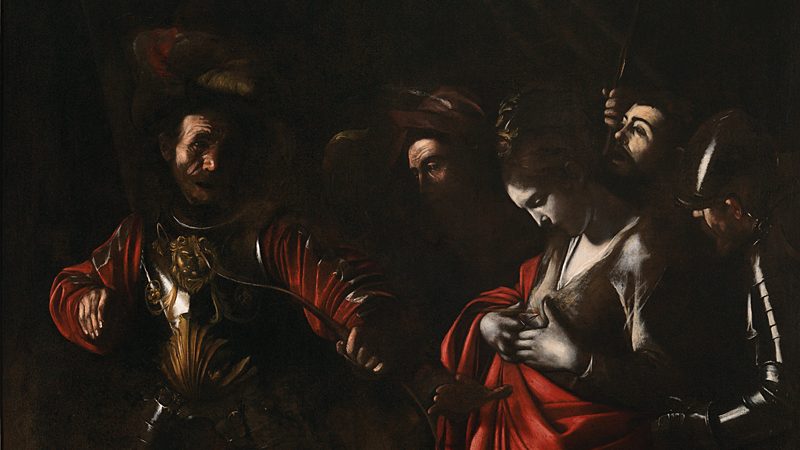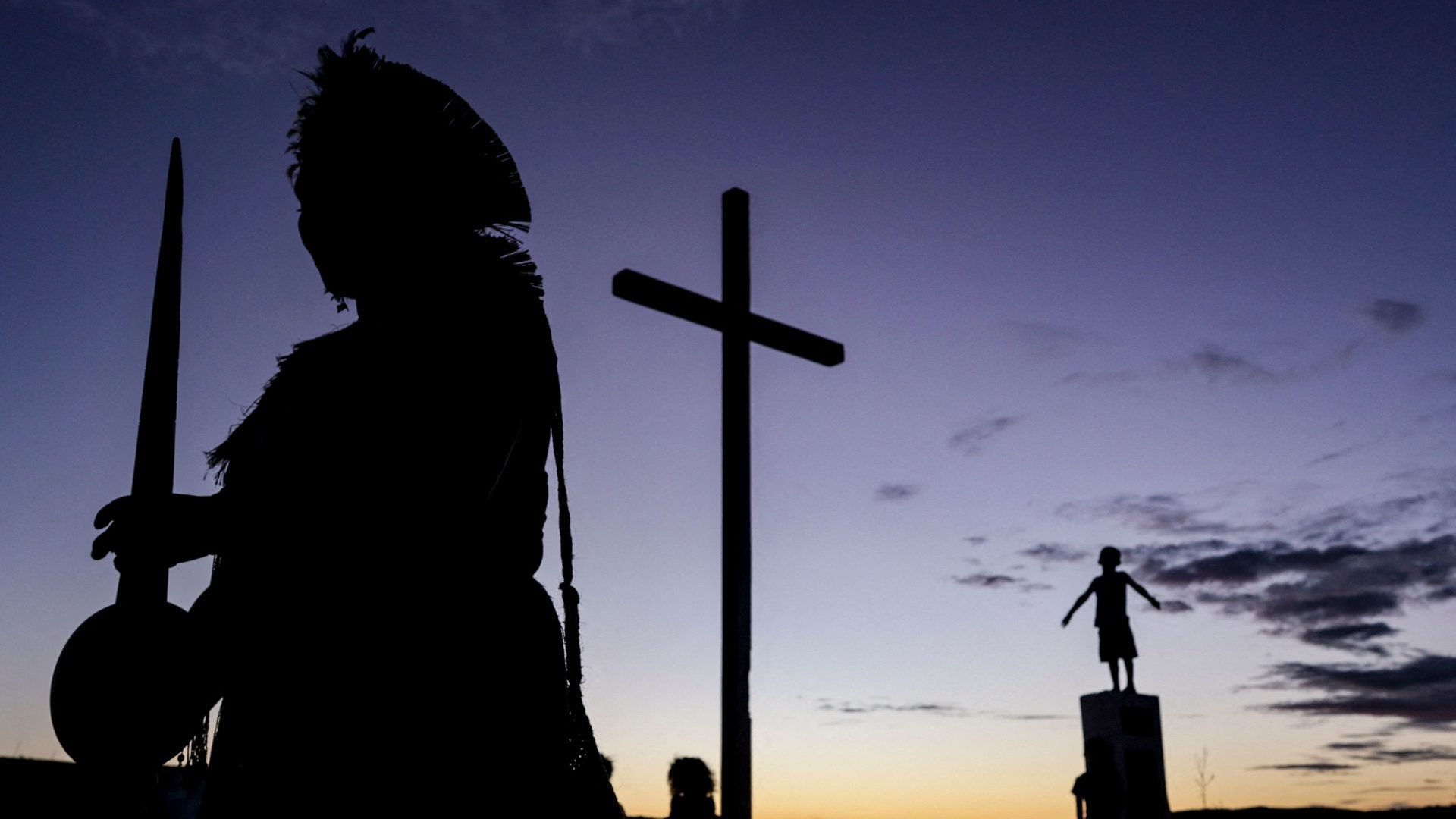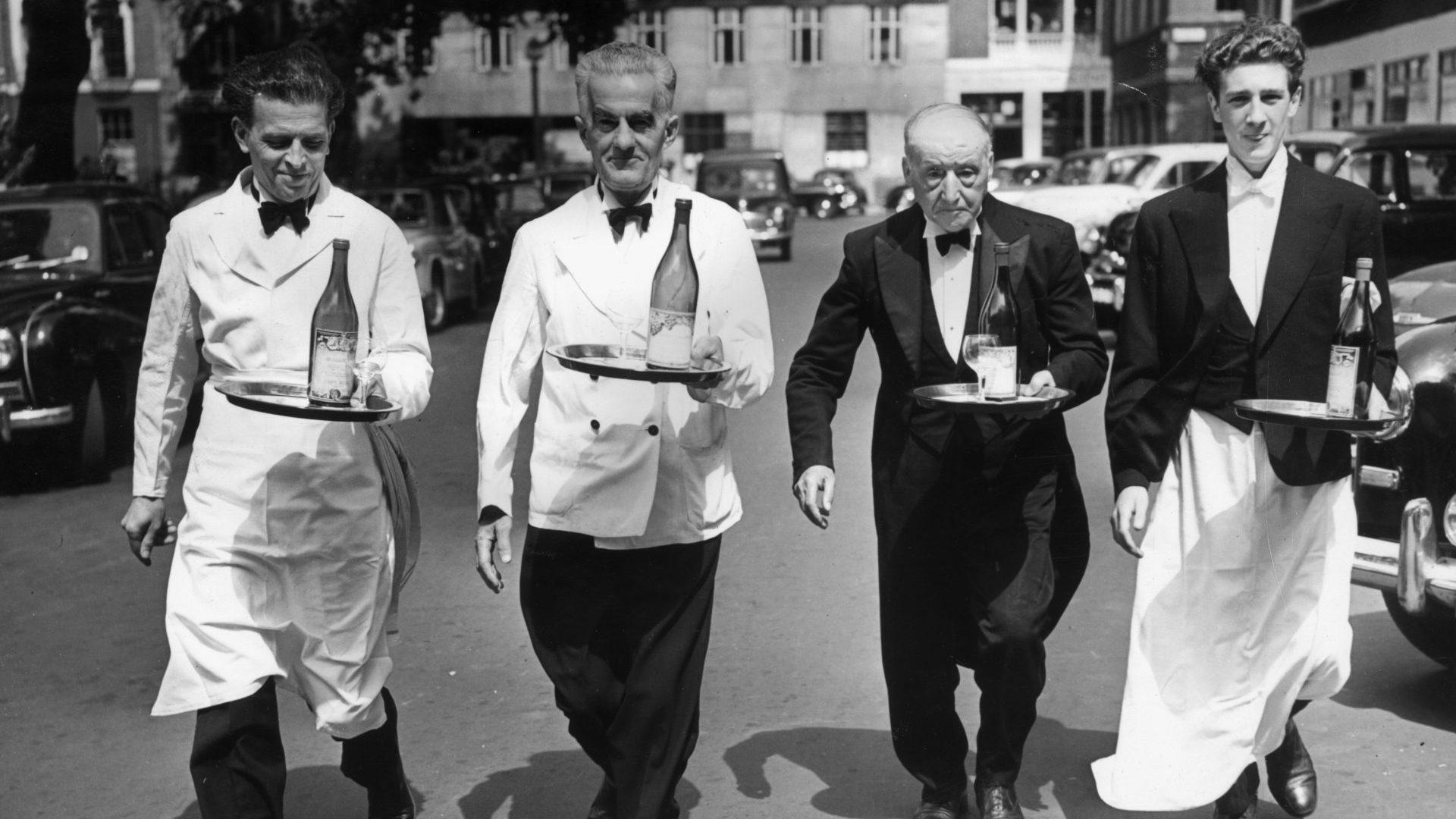The note from emissary to master was matter-of-fact but alarming. There had been a complication, and the delivery of a painting commissioned by the Genoese nobleman and collector Marcantonio Doria would be delayed.
“I had intended to send you the picture of Saint Ursula this week,” wrote Lanfranco Massa in May 1610, “but to make sure of sending it perfectly dry, I put it out yesterday in the sun, which, rather than drying out the varnish, made it soften, since Caravaggio applied it quite thickly; I will go round to said Caravaggio’s to get his opinion on what to do so I can be sure of not ruining it.”
The missive, once read, might have been thrown aside, but thanks to good art housekeeping it ended up in the state archive of Naples, among other updates from Massa. Unearthed and deciphered by the 20th-century art historian Vincenzo Pacelli, it went a long way towards confirming authorship of a crucial picture. The document threw the spotlight on a painting previously attributed to other, lesser artists, but which a second art historian, Ferdinando Bologna, already believed to be the work of Michelangelo Merisi, better known as Caravaggio.
In 1980, when the pair published their dramatic joint conclusion – that the intense scene had been painted by Caravaggio, and weeks before his death at the age of 38 – the work was owned by a Neapolitan bank. Although in less than perfect condition, thanks to Massa’s makeshift efforts and to other clumsy handling, the asset acquired incalculable value overnight.
More importantly, it proved that the short but turbulent story of a master painter had ended with a composition that not only showed him at the height of his powers, but also included a revealing, final, self-portrait. “A stocky young man… with a thin black beard, thick eyebrows and black eyes, who goes dressed all in black, in a rather disorderly fashion, wearing tattered black hose, and who wears his hair long in the front.”
This vivid description of Caravaggio is borne out by the artist, as he places himself at the heart of the action in scenes that often echo the violence of his own life. In the case of the picture initially bound for the Doria collection, The Martyrdom of Saint Ursula, Caravaggio is a witness among the press of men around the sole woman.
A fatal arrow wound, delivered by a Hun prince, is being inflicted on a Christian princess, Ursula, who refuses to marry him. He is no great catch, he and his men having already killed her 11,000 followers.
Other artists had revelled in portraying the martyr’s throngs of virgin companions, but Caravaggio had a gift for catching the split-second turning point in a narrative: the moment when a gold ring is slipped from the finger of an unsuspecting victim, the painful recoiling from the bite of a lizard, the card sharp’s secret signal, the “Who, me?” incredulity of Matthew, called to follow Christ.
In The Martyrdom of Saint Ursula, the murderer still has his fingers clenched from drawing the string of his bow, even as Ursula clutches her pierced chest, in that moment between the intake of breath and the involuntary cry of pain.
The unattractive model for both the Hun, in 1610, and for the swordsman who plonks the severed head of John the Baptist on Salome’s golden platter, painted in the same year, or in 1609, are one and the same. He is typical of what was perceived to be a Neapolitan “type”, with an irregular, probably broken, nose and crunched-up features.
Now both paintings are united in a small but important exhibition at the National Gallery in London, drawing from its own collection, and thanks to a loan by today’s owner of the Saint Ursula painting, Intesa Sanpaolo bank, which absorbed the picture into its own substantial collection following a bank merger 25 years ago.
The practice in Italy of acquiring art and counting artworks among a bank’s assets goes back centuries. In the case of Saint Ursula, ownership came at the end of another strand of the same story. Finally dry enough to despatch, the painting was sent to the Doria collection in Genoa from Naples, where Caravaggio was in self-imposed exile.
It stayed in the family for many generations, until passing to Baron Romano Avezzano who, after the second world war, acquired a villa in the Salerno region previously owned by the Doria family – and its contents. Neither party can have been aware at the time that a single canvas, a depiction of Saint Ursula’s martyrdom, might prove more valuable than the house and all the other goods put together. When the painting passed into the bank collection in 1972, it was for a few thousand pounds.
Michelangelo Merisi was born on September 19, 1571 in Milan. His father, a stonemason, died when he was six, and the precociously talented boy was apprenticed to a painter of frescoes, but taught himself more than he learned there. His family’s links to the small town of Caravaggio gave the artist his full name.
In Rome in his early 20s he worked for a creator of pot-boilers, perfecting the art of still life while leaning towards the figure painting at which he would become a master. His captivating scenes of hawkish street life caught the attention of the influential Cardinal del Monte, who moved him into his Palazzo Madama. While enjoying a series of lucrative private commissions, Caravaggio wanted to reach the wider public, and succeeded when, in 1599, he undertook the first religious work for a church.
The realism of his characters, the sort you could meet on any street corner, did not win universal praise, and at the same time he had a growing reputation for unruly behaviour, habitually fighting back, literally, when offended.
By 1606 he was on the run: in a duel with swords against a disreputable enemy, Ranuccio Tomassoni, Caravaggio severed an artery, and his opponent bled to death. The artist was a marked man, with a bando capitale on his head: he could be killed on sight, his severed head to be produced as evidence.
He fled to Naples because it was then in Spanish hands, which put him beyond the scope of the law in Rome, and his adopted home rapidly acquired a handful of his finest works which, to this day, attract art-lovers from all over the world.
For the charitable foundation at the church of Pio Monte della Misericordia he produced one of his most complex compositions, illustrating in a single canvas all seven Christian acts of mercy: to feed the hungry, refresh the thirsty, clothe the naked, house the homeless, attend to the sick, visit the prisoner, and bury the dead. The whole, tight knot of good works is presided over by the Virgin, escorted by two plunging angels.
Four centuries on, the charitable body still meets and works in this church, deciding on modern welfare projects with Caravaggio’s inspirational work in view.
The masterpiece now housed at the Museo di Capodimonte, on the verdant high slopes above the teeming streets of Naples, is The Flagellation of Christ, another painting infused with Caravaggio’s first-hand knowledge of violence. It looks as if that Neapolitan “type” was called in again, this time snarling as he grips Christ’s hair with his left hand, ready to thrash him with the bare sticks in his right.
The Martyrdom of Saint Ursula was Caravaggio’s last painting for Naples – and for ever.
He stayed twice in the city, ducking and diving around the Mediterranean in between times. He was partly under the protection of the powerful Colonna family, thanks to a childhood connection.
But it was in Naples that Caravaggio was viciously attacked in October 1609 by a number of men when leaving, late at night, a backstreet tavern popular with artists, the Locanda del Cerriglio, which still exists and is now sought out as much for its associations as for its food.
He was horribly cut around the face, and never really recovered in mind or body from the assault, despite being taken in to recuperate at their waterfront home by a member of the Colonna family.
The Martyrdom of Saint Ursula exhibition opens the National Gallery’s 200-year celebrations, thanks to the art sleuthing that came a long way into its chequered history.
The exhibition’s curator, Francesca Whitlum-Cooper, explains that the painting is in far from perfect condition.
“Whatever damage Massa caused by setting the painting out in the Neapolitan sun to dry was worsened by its return journey to Naples in 1832, when the packing materials adhered to the painting’s surface, and by harsh historic restorations,” she explains in the short and illuminating catalogue that accompanies the exhibition.
The painting continues to fascinate successive generations of viewers and art specialists, who delve deep to understand Caravaggio’s mindset and state of health. Some believe that he may have lost some manual dexterity in the attack. Others wonder whether his sight was damaged in the facial wounding.
Whitlum-Cooper thinks not. She points to the brilliant sheen of the Hun’s silver helmet, effected by applying white paint in two directions, to catch the light, and to the intricate nature of the studs and embroidery in Ursula’s gilded gown.
As with so many paintings, its story has continued long after the work of art left the studio. It was only in 2004 that later overpainting was removed, to reveal the previously hidden hand of one bystander, and the impact of unravelling Massa’s messages resonates still.
“It’s not so much the last Caravaggio,” says Whitlum-Cooper, “as a lost Caravaggio.”
The Martyrdom of Saint Ursula is at the National Gallery, London, from April 18 to July 21. The Gallerie d’Italia of Intesa Sanpaolo are in Via Toledo, Naples, and in Vicenza, Turin and Milan




